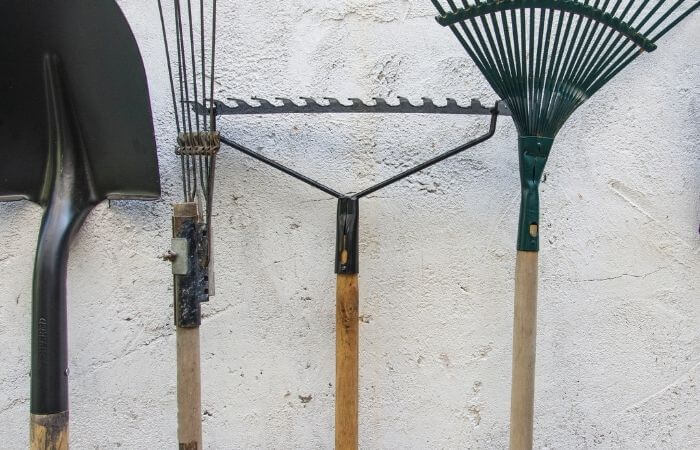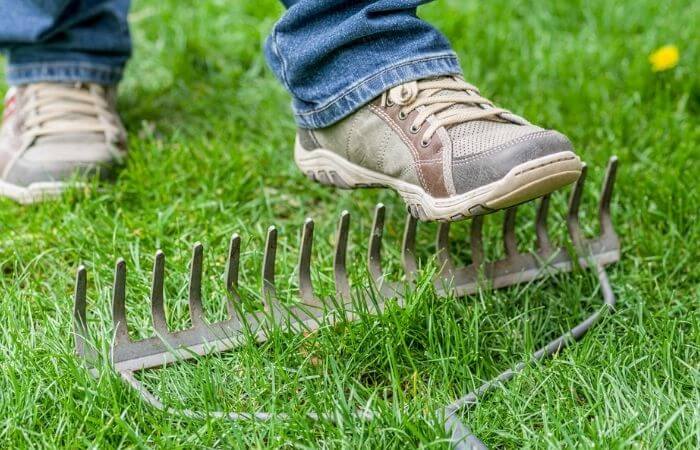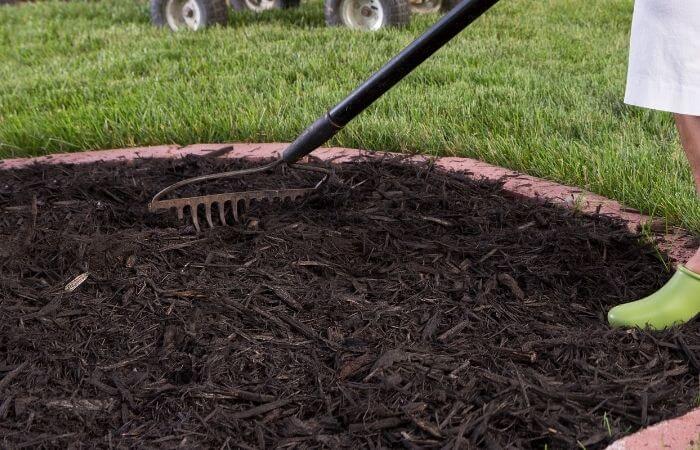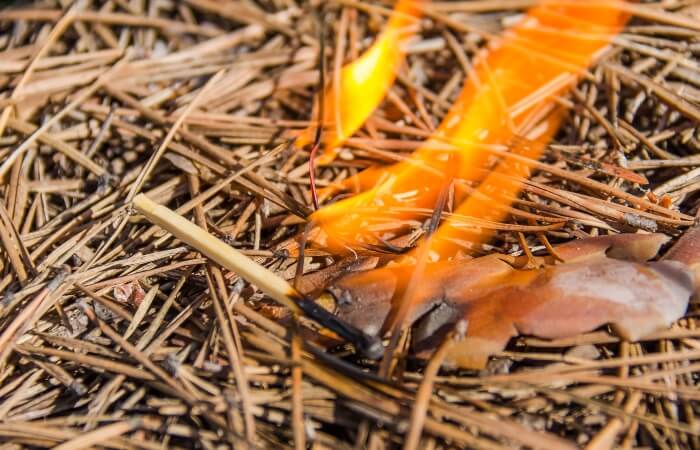Do you want to streamline your landscaping and gardening chores?
For many lawn and garden tasks, I find using a bow rake increases efficiency, so I put together this bow rake guide.

Inside, I explain what makes a bow rake different, what tasks they are best for, and what features are essential to look for before purchase.
Once you see how using a bow rake can help you tackle a wide array of home landscaping chores, you’ll be glad to make the small investment in this high-impact gardening tool!
What Is A Bow Rake?
A bow rake typically features a metal head a foot or so wide. Along the width are a series of short tines two or three inches long.
While leaf rakes use lightweight and flexible metal in a fan shape to gather up light yard debris, a bow rake uses rigid metal in a 90-degree angle shape to do heavy-duty lawn and landscaping projects.
A bow rake is also known as a:
- Level-Head Rake
- Soil Rake
- Garden Rake
- Metal Rake
Bow rakes tines can either come straight down from the head or have a slight curvature toward the handle, which helps grip and pull gravel, soil, or yard waste. Bow rake heads with this tine bend are known as a “curved bow.”
Best Lawn And Garden Uses For A Bow Rake
1. Dethatching The Lawn

Dethatching is a crucial springtime ritual for those who care about the look and health of their lawn.
Bow rake tines are not so long as to tear out healthy grass roots, but they safely grasp troublesome thatch stuck on the surface between grass blades and pull it out with little effort.
The best way to use a bow rake to dethatch the lawn is to start by “dropping” the head of the rake into your lawn, then pulling the rake towards you and slightly upwards, which frees the thatch from the turf.

Remember not to leave your bow rake facing up like the picture above. This will lead to a painful accident!
Related | Best Lawn Dethatchers
2. Prepping Garden Beds

Use a bow rakes tines to spread out material, sift out rocks, and break up any soil compaction in your garden. For a flat planting surface, flip the tool over (tines up) and run it back and forth over the ground.
Once you flatten the garden bed, turn the tool perpendicular, and pull the short side through the soil to create furrows for sowing seeds.
3. Completing Cement Work
Mixing cement is a breeze when you use a bow rake. The robust build and open metal head can work through cement mixes for full integration of materials.
The bow rake has the sturdiness to push and spread out the cement to all corners fast. Hold the rake straight up (tines down and flat) to help tamp the concrete down to remove air pockets.
4. Finishing Off Gravel Or Stone Areas
Bow rakes have the perfect design and strength to spread and finish off gravel or rock walkways or planters. Use the tines to pull or push stones in any direction, which avoids needing to use your hands or shovel to fill in areas.
Flip the rake over to smooth the surface or turn the tines sideways to work stones into small crevices.
5. Maintaining Mulch
A bow rake is my go-to tool for wood mulch. Use the tines to push mulch around your plants and then to create an even surface.
Freshen up older mulched planter beds after they begin to compact by safely digging tines down several inches to loosen and fluff up the material for better aeration and appearance.
6. Weed Removal
I rely on my bow rake to make weed removal in my planters less back-breaking. Press down while raking through weedy spots in soil or mulch areas of your landscaping and let the curvature of the tines grab onto offending weeds and help pull them free.
After running the bow rake through the weeds, it’s much easier to pull them from the now loose material, roots and all, which deters regrowth.
7. Raking Up Wet Leaves
A standard wide leaf rake is no match for the strength of a bow rake when it comes to cleaning up wet piles of leaves.
Often, bothersome leaves can be stuck under shrubbery or up next to the foundation of the house. Use the bow rakes heft and slimmer size to grab and pull leaves out from tight spots.
8. Pruning Clean-Up
The wide tines grab pruning debris from on and around shrubs or trees without causing damage to the stems, branches, or leaves.
Important Bow Rake Features To Look For
Low-quality bow rakes may offer an attractive price point, but you may find yourself needing to replace it after only one or two seasons.
Inspect these features to ensure you are getting the best bow rake for your money:
- Handle – Look for lightweight wood or fiberglass with a cushioned grip for strength, durability, and comfort.
- Shape of tines – A slight inward curvature of the tines increases functionality and grip on gravel or debris, which reduces strain on arms.
- Head materials – Forged-steel is the strongest metal, and look for quality welding or screws where parts attach for long-lasting use.
- Strength and longevity – Look for materials and coatings that withstand rust, peeling, breaks, or corrosion under adverse usage or weather conditions
I suggest using oil on wood and metal bow rake parts to avoid rust and water damage.
Avoid bow rakes made with an aluminum handle or tines, as the material can bend easily, especially if using the rake for cement or rock work.
I do like all-steel handle bow rakes, but the overall weight could make it tiresome to use for time-consuming yard chores.
In Summary
A top-quality bow rake is one tool every homeowner needs to keep their lawn and landscape looking first-class and for carrying out projects like mulching or cement work. I hope you use this guide to purchase the perfect bow rake that can benefit you and your garden!










